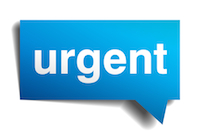The health care payor and provider worlds are concerned with access, cost and quality. The federal government adds a population health gloss, and calls it the Triple Aim – better care for individuals, better health for populations, at reduced per-capita costs. Those fundamental drivers are now having a clearer effect on the Health 2.0 ecosystem. The demos and discussions I’ve observed thus far at this year’s conference are more consistently focused on addressing these issues than they havce been in the past. Early-stage, and more established, companies’ products are also notable in that they are focused on connectivity in a broader sense than before – whether that’s connectivity for data, so that sensors can share data with your personal tracking software, your doctor or your community, or connectivity for individuals, who can use online social tools to improve their own health status through online interactions in a number of different ways.
Mark Smith, President of the California Health Care Foundation, kicked off Health 2.0’s Monday sessions with some words of advice to the entrepreneurs in attendance: In order to attract the interest of investors and customers, products and services should address at least one of the pain points in the health care system, including, for example, cost. Richard Gilfillan, acting director at the CMS Center for Innovation, focused on the Triple Aim as he laid out the underpinnings of his office’s goals – use data to drive innovation and reduce cost without sacrificing quality. The Center for Innovation has $10 billion in the bank to spend on programs designed to meet the Triple Aim, and these data-driven experiments in the health care provider sector will require some new health IT tools. I spoke with more than one conference attendee who was there with an investor hat on to kick the tires of this year’s models of health 2.0 companies.
Aetna announced its partnership with Mindbloom – which sort of looks like Farmville for healthcare. While it did not appeal to me, personally, as a tool for managing my own health behaviors, I recognize the hundreds of millions of people play Farmville, and therefore I believe that Aetna’s investment may yet pay off. This move represents a new way of thinking about wellness on the part of payor organizations like Aetna, which are now taking to identifying themselves as health IT companies. (Aetna’s CEO Mark Bertolini did so at the conference.) Wellness programs are no longer about financial carrots and sticks; they are about engaging with a social network that can provide feedback and encouragement – since experience seems to show that the carrot and stick are effective for no longer that about six months. It would be interesting to learn whether Aetna or its employer clients are backing off of financial incentives to promote wellness since they’ve determined that they don’t really work. Optum Health (United Health Group) showed off its patient-facing wellness platform, as well, which also incorporates social elements, allowing an individual to garner support in reaching a personal goal from family, friends and health care providers. A key question that comes up in this context is about the degree of privacy that may be expected by an individual using these tools: Will my employer be able to find out what conditions I have? One conference attendee told me he was concerned that a personalized health portal that an employee may be encouraged to use on a work computer may generate Google Ads relevant to a medical condition, and a co-worker may see the targeted ads (e.g., about pregnancy) on someone’s desktop, even when the user is logged out of the portal. At another level, the concern is also that a self-insured employer sponsor of such a plan may have access to personal health information of employees. There is supposed to be a firewall there, but the concern is clearly alive and must be addressed head-on by employers and vendors.
Several interesting initiatives were shared by organizations established by large (“big iron”) companies as joint ventures (e.g., CareInnovations, an Intel-GE joint venture, whose CEO, Louis Burns, said his instructions are to “drive the bus like you stole it”) or otherwise (e.g., Dossia – a PHR company funded by a number of large employers that has an open API and encourages developers to build tools for its ecosystem). CareInnnovations has a web-enabled tabletop device that enables self-care at home through monitoring, reporting and interactions with health care providers (live is an option, but the built-in logic directs patients through appropriate prompts and videos, too). Dossia allows covered employees to set up a health record that pulls in data from health care providers and also from sensors and monitors, and to share that data with wellness apps, including health care social networks.
Other social media tools for health included some special-purpose services that have a social dashboard interface familiar from the likes of Facebook – e.g., OneRecovery, which was touted as an example of a new “community and behavior change” model focused on substance abuse and recovery. The proliferation of the special-purpose tools, many with interfaces reminiscent of Facebook, made me think that a dashboard like GravityEight would be of significant help, since logging into multiple communities on a daily basis is probably not something that most people are interested in doing. Additional special purpose apps and tools will continue to be developed, not least because a number of organizations have established challenges to motivate developers to work on issues of interest to them by holding out the prospect of cash prizes. A number of open and newly announced challenges may be found here. GravityEight is also notable because it defines wellness broadly, as did the “Unmentionables” panel participants, who highlighted the fact that, for example, marital stress affects physical health and job performance and therefore should be addressed head-on in employment-based wellness programs. (One panelist said that the Air Force grounds pilots going through divorce; the stress makes them unable to do their jobs, and other employers should take note – by offering programmatic help if not time off, or reassignment to other duties.)
The most appealing approaches to health behavior modification that I’ve seen thus far at the conference are those that mash up health, quantified self, gaming and social. My faves include: StickK, which allows you to set your own health-related goals, appoint a coach who will monitor your progress, and take a donation via credit card to an organization whose mission you oppose – and release that donation if you do not reach your goal, and livn.it, still in private beta, which harnesses the power of massively multiplayer gaming to motivate behavior change in healthy directions.
Bottom line: So many of us are now clearly creatures of the internet, and to “fish where the fish are” it is critical to move health care and behavior modification messaging out of the doctor’s office and into online communities and the online gaming setting. The best of the demos at Health 2.0 showed that these approaches are appealing and engaging to individuals, and are also effective in improving individual and population health in a cost-effective manner.







